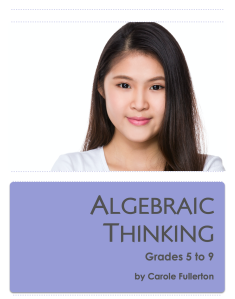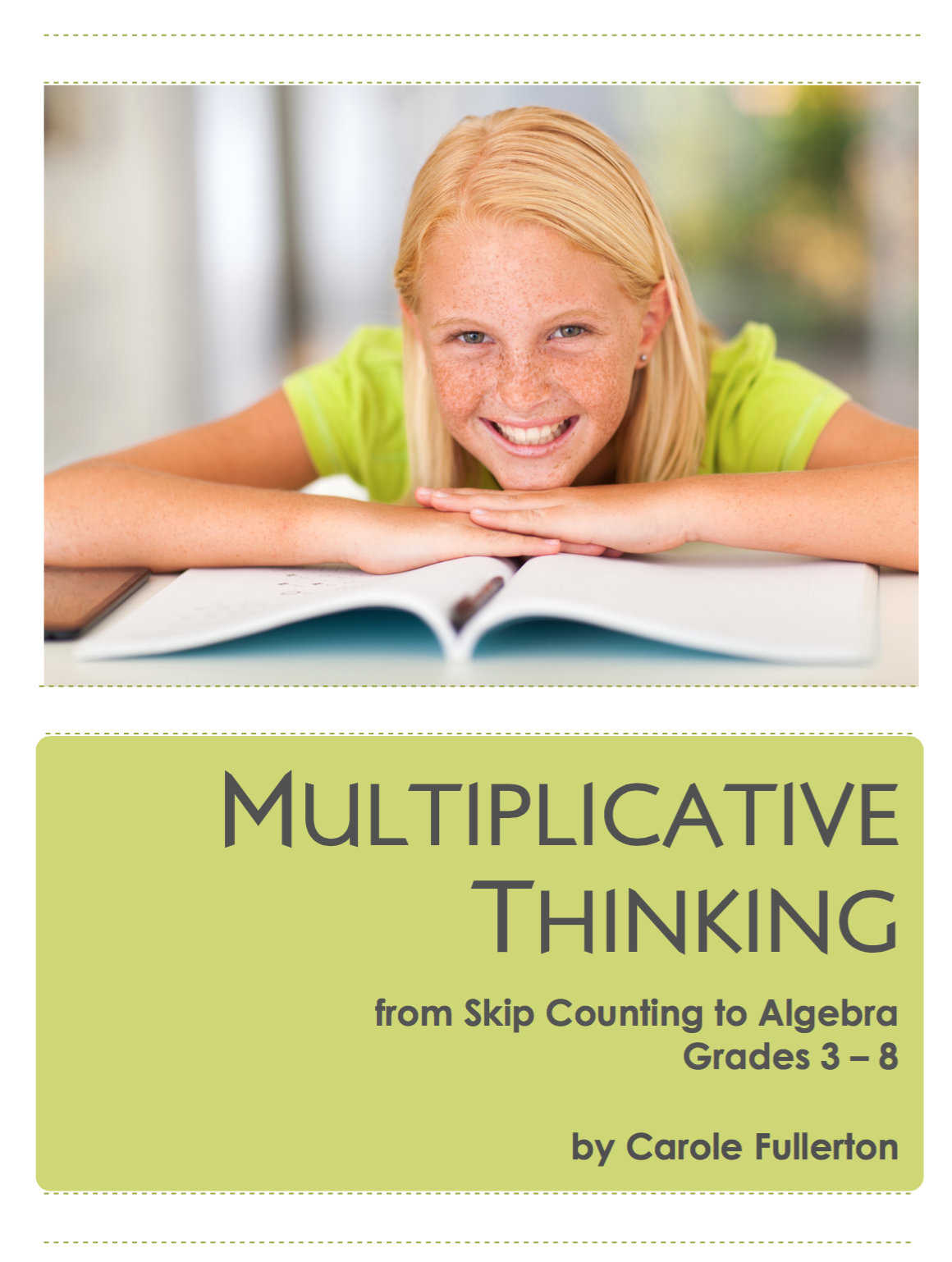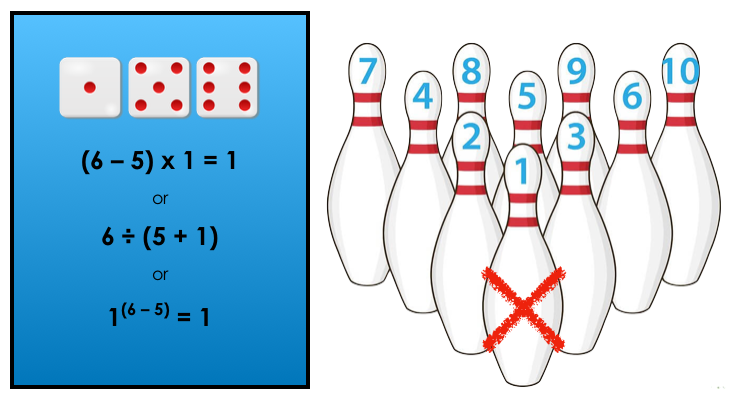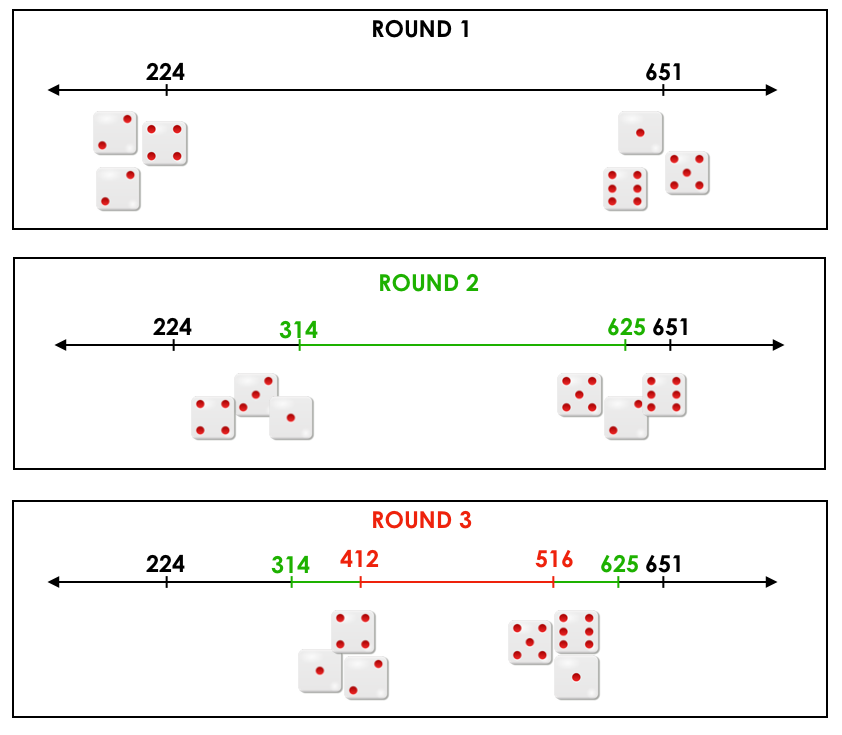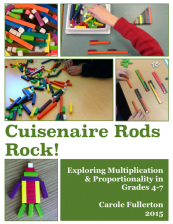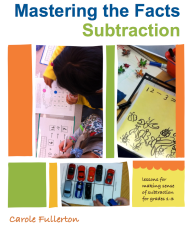Good Questions for Kindergarten & Grade 1
Lessons and Open-ended Tasks for Building Number Sense: A New Resource by Carole Fullerton
Good questions engage students in important mathematics. They inspire and propel students in their learning, offering an entry point for all. What better response could there be for our delightfully diverse early primary classrooms?
This new combined grades resource is built around good questions, drawn from each of the strands in the Kindergarten and Grade 1 curricula. Lessons feature sorting and patterning, shape and measurement and number sense (subitizing, counting, estimating and the operations) in an accessible format for teachers of early primary.
At the end of each set of lesson sequences, a collection of more than 200 open-ended tasks is presented to allow for building, exploration, practice and extension, meeting the needs of all learners.
Have fun! Get inspired! Keep them thinking!
ENCORE PLUS de bonnes questions: New French Resources for Grades 2-4 and 5-8
Announcing two new math resources for french immersion classrooms:
ENCORE PLUS de bonnes questions pour 2e à 4e
ENCORE PLUS de bonnes questions pour 5e à 8e
My sincere appreciation to Geneviève Chong for her brilliant French adaptations of my newest English resources — MORE Good Questions for Grades 2 to 4 and MORE Good Questions for Grades 5 to 8. These new French resources are designed to be used in immersion classrooms, to promote mathematical thinking and the sharing of strategies.
Check them out on my online store!
Enjoy!
New Resource! MORE Good Questions for grades 5-8
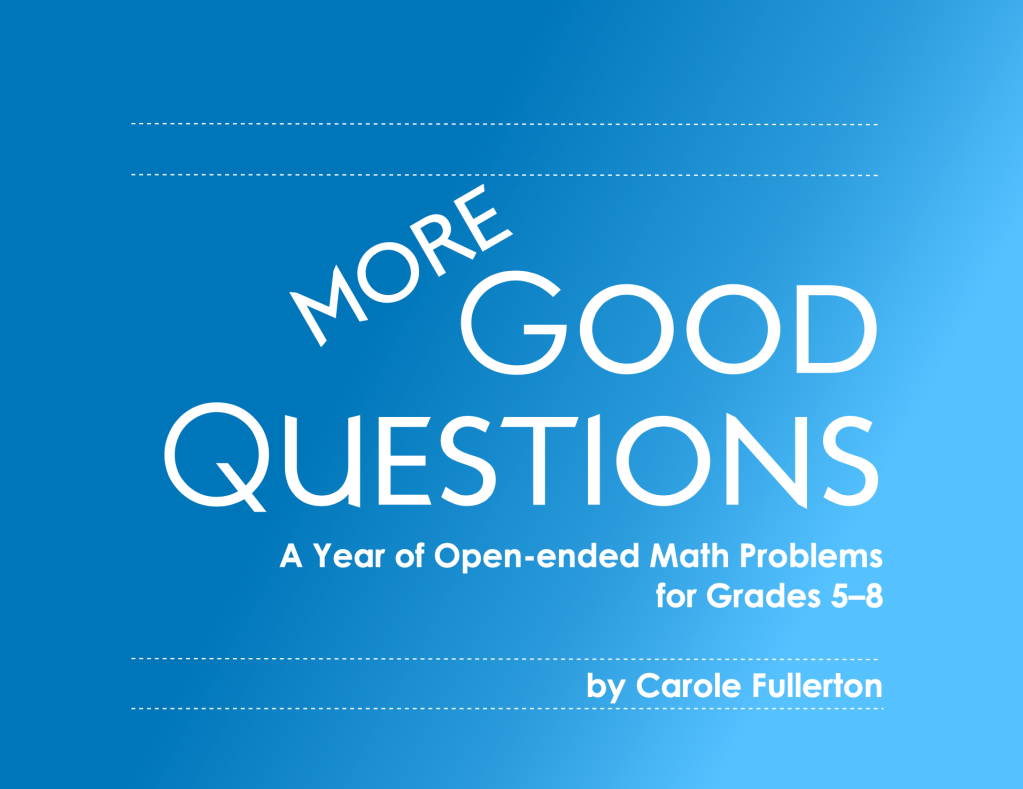
Friends …
I am immensely pleased to announce the release of my latest volume of problems for intermediate and middle school classrooms.
More Good Questions: A Year of Open Ended Math Problems for Grades 5-8 is exactly that — a series of 220 tasks to inspire thinking, connection-making and reasoning for today’s diverse math classrooms.
In this second volume of problems, students will engage with tasks involving the operations, proportional reasoning, measurement and patterns designed to promote mathematical capacity. Problems are structured in sets of 5, clustered by topic, strategy or big math idea. Each task is slightly more complex than the last to allow for conceptual development over the course of a week. Problem sets can also be used as an intact set of 5, allowing students to choose the problem that is just right for them.
Intended to be used daily, these problems are designed to promote mathematical curiosity and connection-making. The richness comes from the shared discussion and comparison of strategies. The more we share our thinking the smarter we all become!
Check it out at mindfull.ecwid.com.
Stay tuned for the Grades 2-4 version coming soon!
Algebraic Thinking for Grades 5-9: A New Math Teaching Resource
Hello friends…
I am reaching out to let you know that I have just completed a new resource for intermediate and middle school teachers entitled Algebraic Thinking for Grades 5-9.
The resource focuses on the two important strands of algebraic thinking: patterns and relations and solving equations. Lessons include open-ended prompts, direct instruction and age-appropriate manipulatives use to promote the big ideas in algebraic thinking.
Content includes: increasing and decreasing patterns, generalizing from a T-table, describing and graphing linear relations in all 4 quadrants, explorations of slope (positive, negative, whole number and fractional) as well as y-intercept and the general form of a line, interpolation and extrapolation, operations on integers, solving equations, monomial and binomial multiplication using the distributive property, converting word problems to algebraic equations and more!
A range of strategies for developing mathematical language, for addressing diversity and for authentic assessment are featured in this 250 page teacher resource book. Algebra tiles, number balances and 4-pan algebra balances are used to model relations and to represent and solve advanced algebraic equations. Games, problems and levelled practice are included in each lesson, allowing for extensions and support as needed. Manageable and accessible digital scaffolds are highlighted, including virtual manipulatives and graphing tools.

This resource also features 23 embedded video clips — mini lessons on important algebraic concepts and demonstrations of how to use algebra tiles, colour tiles, the number balance and 4-pan algebra balance — as a way to support teachers and their students in grasping important algebraic ideas. These videos can be used by teachers to preview a lesson or by teachers and their students in a face-to-face or virtual setting.
Algebraic Thinking for Grades 5-9 is available from my online store for $50. Order now by visiting mindfull.ecwid.com — just in time for our return to school (in whatever form that takes!).
Thanks as always for your support.
Here’s to a new year…!
Carole
Penguins! A game for the whole family
Happy Monday, all!
In a time when we find ourselves spending more time together, learning and thinking and playing together at home, I wanted to share a game that is appropriate for players of all ages. The game “Penguins!” is strategic and fun for the whole family!
To play you’ll need 2 regular 6-sided dice and some counters. They can be beans coloured on one side with a marker, or even some Cheerios and some Shreddies cereal. It’s a good idea to have a piece of paper and a pencil handy for calculations.
Here’s how to play (full instructions are included on the “Penguins!” game board):
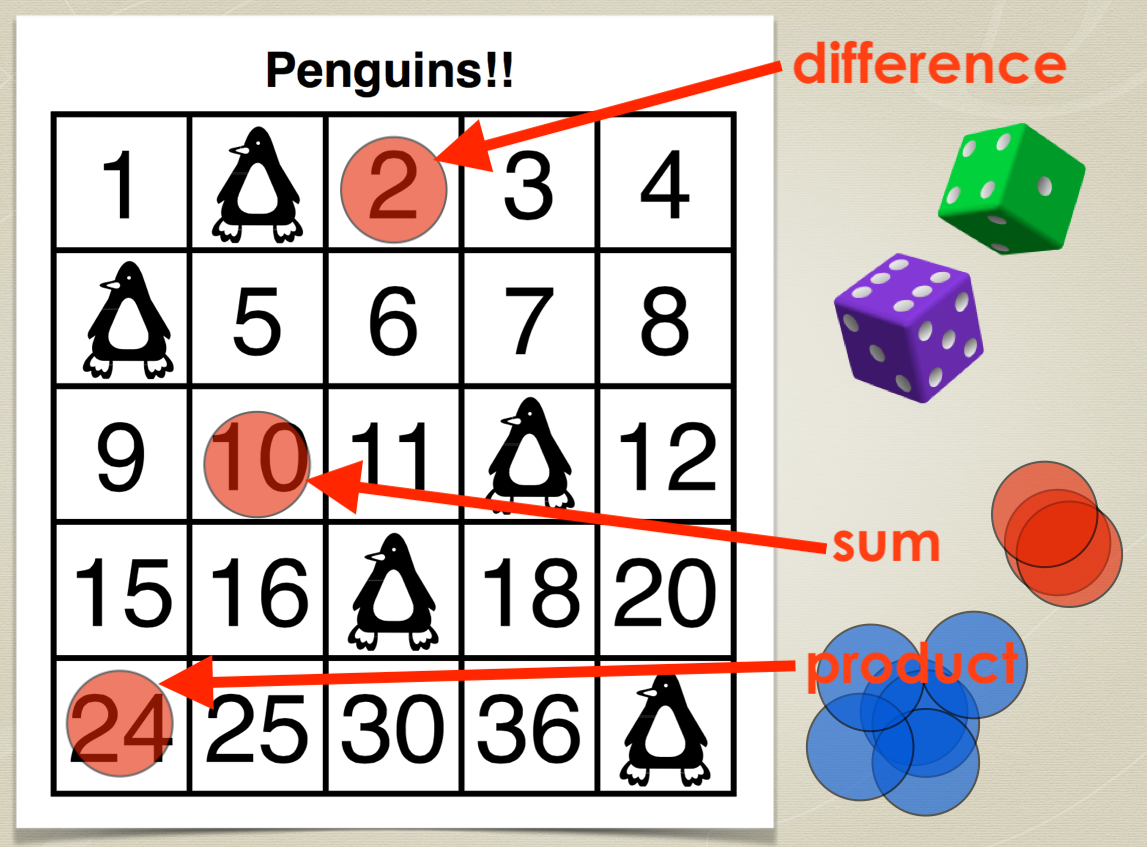 Roll the dice. Look at the numbers.
Roll the dice. Look at the numbers.
Find the sum and write it down. (add the numbers)
Find the difference and write it down. (subtract one number from the other)
Find the product and write it down. (multiply the numbers)
Now decide which one of these answers (the sum, the difference or the product) you will use. You can only pick one! Cover that number in your colour. Let your partner have a turn. If your sum AND your difference AND your product are taken, you can cover a penguin instead! Three in a line in your colour wins the game.
Have fun!
Carole
Roll the Bigger Product Game
Hello friends. I hope you’re well.
As we move into another week of “school at a distance”, I’d like to offer you a game for intermediate students. This is a game that requires a partner and a regular 6-sided die (although a 10-sided one will make things more interesting!).
 Full instructions for play are on the Roll The Bigger Product game board, but the goal is to take turns placing numbers in each of the positions in the 2-digit factors to create the largest possible product. You get to discard 2 rolls — throwing them into the trashcan — to be even more strategic! When all 6 positions are filled, calculate the product and compare it to your partner’s. The larger product wins.
Full instructions for play are on the Roll The Bigger Product game board, but the goal is to take turns placing numbers in each of the positions in the 2-digit factors to create the largest possible product. You get to discard 2 rolls — throwing them into the trashcan — to be even more strategic! When all 6 positions are filled, calculate the product and compare it to your partner’s. The larger product wins.
To add complexity to the game, try placing decimals between both double digit factors — or harder still, within just one of the 2 factors.
Carole
For more games like this and a set of fully fleshed out lessons, see my teaching resource “Multiplicative Thinking: From Skip Counting to Algebra for Grades 3 to 8” available from my online store.
Cross Over: A game for practicing addition and subtraction
Hello all!
I’d like to share another strategic game from BEAM called Cross Over.
 Players start on opposite sides of the hexagonal game board and roll a regular 6-sided die, then choose whether to add the number shown or to subtract it, moving only to touching spaces.
Players start on opposite sides of the hexagonal game board and roll a regular 6-sided die, then choose whether to add the number shown or to subtract it, moving only to touching spaces.
The goal of the game is to land on the opposing player’s start space.
As the days become warmer and drier here I am imagining a version of this game played outside on an interlocking brick driveway or a drawn with … you guessed it… sidewalk chalk. :o) But perhaps that’s a bit ambitious.
Regardless of how you choose to play, students working on mastering addition and subtraction will enjoy Cross Over, and the combination of strategy and luck will ensure that even older children and parents will find the game accessible and fun.
Enjoy!
Carole
Simple Dice Games for Math Practice
Hello friends
Today marks the beginning of a new kind of school — the stay-at-home kind. More than ever we are going to need to be flexible and patient and kind to our kids, their parents and our teacher colleagues. We are in uncharted waters… but not without good will!
I wanted to offer up a couple of simple dice games for you to play at home, to build number sense and computational fluency while having fun…
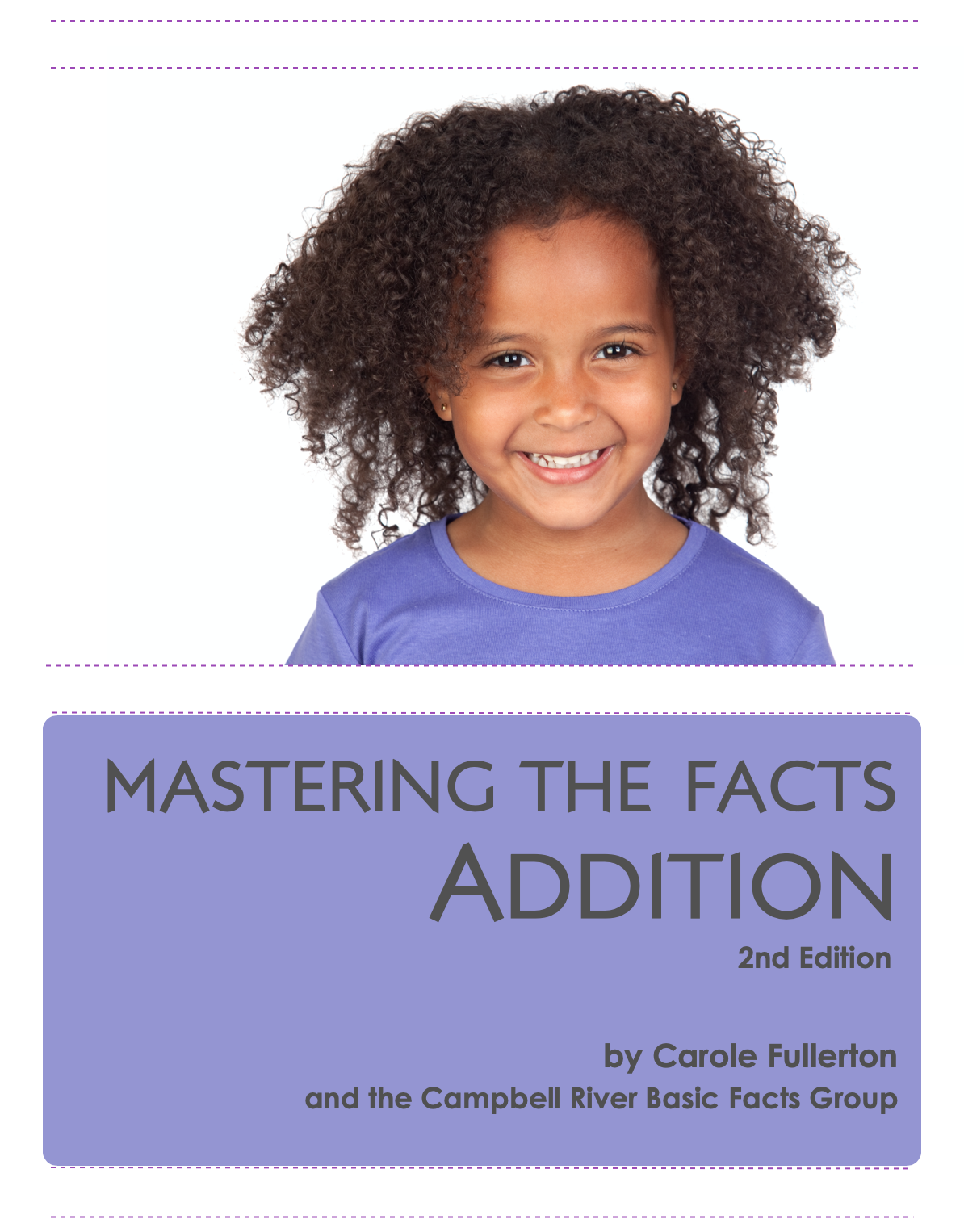 For more games like these, check out my resources entitled: Mastering the Facts Addition (2nd Edition) , Mastering the Facts Subtraction and Mastering the Facts Multiplication (2nd Edition) available from my online store.
For more games like these, check out my resources entitled: Mastering the Facts Addition (2nd Edition) , Mastering the Facts Subtraction and Mastering the Facts Multiplication (2nd Edition) available from my online store.
Stay safe. Be kind.
Carole
Reach for the Top You can play this game alone, with a partner or against a partner. Print a copy of the Reach for the Top grid available here.
How to play: Roll two 6-sided dice. Find the sum. Write the equation in the box over the sum (or colour it in). The game is over when one of the sums reaches the top! (See the sample game below.)
 Order of Operations Bowling: You can play this game alone, with a partner or against a partner. You need one 6-sided die and the optional Bowling Pin recording sheet attached. The object of the game is to “knock down” all the bowling pins from 1 to 10.
Order of Operations Bowling: You can play this game alone, with a partner or against a partner. You need one 6-sided die and the optional Bowling Pin recording sheet attached. The object of the game is to “knock down” all the bowling pins from 1 to 10.
How to play: Roll the die 3 times. Record the 3 numbers. Use these three numbers — in any order — to create an equation with an answer of 1. You must use all three numbers. Once you’ve found an equation (or 2 or 3!) with an answer of 1, cross off the bowling pin with the number 1 on it. Now move on to the number 2, then 3, then 4… until you have created equations with all the answers from 1 to 10. Each time you find an equation, you can knock down the pin with that number on it.
If you can knock down all 10 bowling pins with one set of numbers, you get a “strike”. If not, roll the dice 3 more times to get a new set of numbers and continue. Two sets of numbers earns you a “spare”. How many different operations can you use?
In the sample round below, Player A rolled a 1, a 5 and a 6. She used all 3 numbers to create equations (a whole bunch of them!) with an answer of 1. She chooses one of the equations and knocks down the 1 pin. She then moves on to create equations with an answer of 2.
Sidewalk Chalk Meets Math Game Part 2: Testing the Limits
All right folks…
If you’re outside (or wish you were!) here’s another math game worth playing. It’s called Testing the Limits — and I’ve adapted it from BEAM Maths of the Month.
 This version is adaptable for all grade levels and can be played outside with sidewalk chalk (or indoors on paper!).
This version is adaptable for all grade levels and can be played outside with sidewalk chalk (or indoors on paper!).
To play, you need sidewalk chalk and a die (6-sided is fine, 10-sided is better!). You can play this game with a partner or alone. Here’s how…
ROUND 1: Roll the die 3 times and make a 3-digit number. Roll 3 more times and make a second 3 digit number. Put both numbers on the same number line. These are your “limits”.
ROUND 2: Now roll 6 more times. Make 2 different 3-digit numbers that fit within the limits from ROUND 1. Plot them on the same number line as ROUND 1. If you can do it, these new numbers become your new limits and you can move onto ROUND 3. If not… the game is over! Check out my sample game below.
Try using just two 2-digit numbers for younger students, or even decimal numbers for older students. Consider trying this with negative numbers, or even one negative and one positive to explore both sides of zero.
Enjoy! Stay safe…
Carole
Check out my online store for more free materials and problem-of the day resources!
Sidewalk Chalk Meets Math Game!
For those of you who are looking for ways to play together and build mathematical thinking and skills at the same time, consider this simple hopscotch game. You’ll need sidewalk chalk and a small stone. Children can play alone or in partners.
Go outside. Draw a large square on the pavement. Divide the square into at least 9 smaller squares, as shown below. This is called a matrix.
In each of the smaller squares record a number from 1 to 9. You can put them in any order. Now take a small stone and toss it onto the matrix. This is your starting square. From here, you must jump to the number that adds to give you 10.
In the game below, a child has thrown a stone onto the number 8. She stands on the number 8 then and has to jump to get to the number 2 — the missing part to get to 10.
 If there’s another child nearby, they should record the equation that matches the jump. (8 + 2 = 10)
If there’s another child nearby, they should record the equation that matches the jump. (8 + 2 = 10)
Player 2 (if there is one) takes his turn, throwing a stone and jumping from that number to the missing part to make ten. Player A records the equation.
The first player to hop on all the combinations is the winner. (And yes, landing on a 5 gets you a double jump!)
If you’re stuck inside, make the matrix on a sheet of paper and toss coins — or even Cheerios! — instead of jumping from number to number. Toss the first coin, say the number you’ve landed on, then say what the missing part is to get to the desired sum.
Of course you can change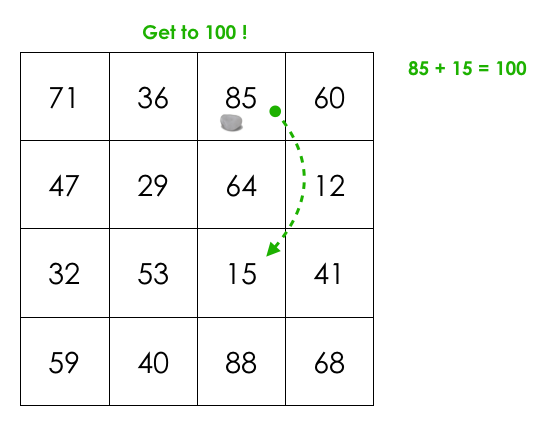 the numbers to suit the age and stage of the players…
the numbers to suit the age and stage of the players…
Consider a double-digit version (Get to 100!) or even a decimal version (Get to 5.0!). The sky’s the limit. I’ve included line masters for each of these games — and a blank grid, too — for you to use as inspiration.
Have fun… stay safe…
Carole

Math at Home
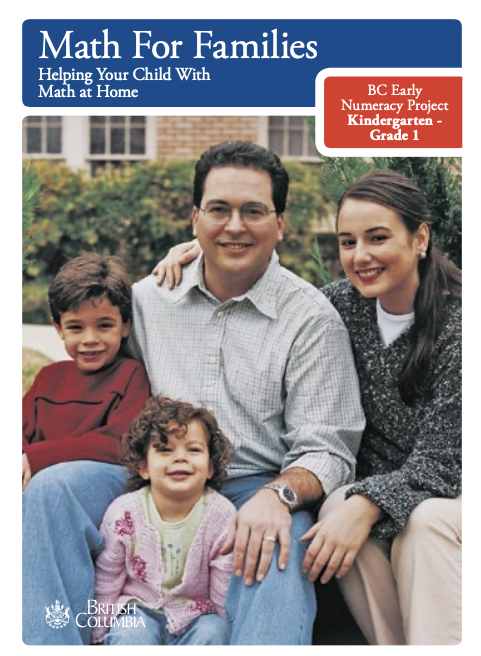 To my teaching colleagues and parents everywhere…
To my teaching colleagues and parents everywhere…
We have always been partners in the mathematics education of our children — and now we find ourselves in a time that demands even more collaboration between home and school. Ensuring that our children have meaningful math learning experiences when we are inside and inundated with technological distractions can be difficult.
To that end I am inviting you to explore the following resource for parents of primary aged children. It was written years ago in a partnership between the BC Ministry of Education and a group of respected BC educators to support parents of young children to find and highlight mathematics in their daily lives. From sorting and counting to estimating and measuring, Math For Families has dozens of simple activities that families will love. The resource has also been translated into Chinese and Punjabi.
For more free resources, visit my online store at mindfull.ecwid.com.
And please, stay well.
Carole
Mastering the Facts Addition: 2nd Edition
I am pleased to announce the release of another updated resource — Mastering the Facts: Addition. In this 2nd edition you’ll find new games, updated strategy lessons and more literature links to support students in learning — and retaining — their addition facts.
Check it out on my online store.
As always, I am grateful to my colleagues in the Campbell River School District for their collaboration on the 2012 original. :o)
Mastering the Multiplication Facts — 2nd Edition
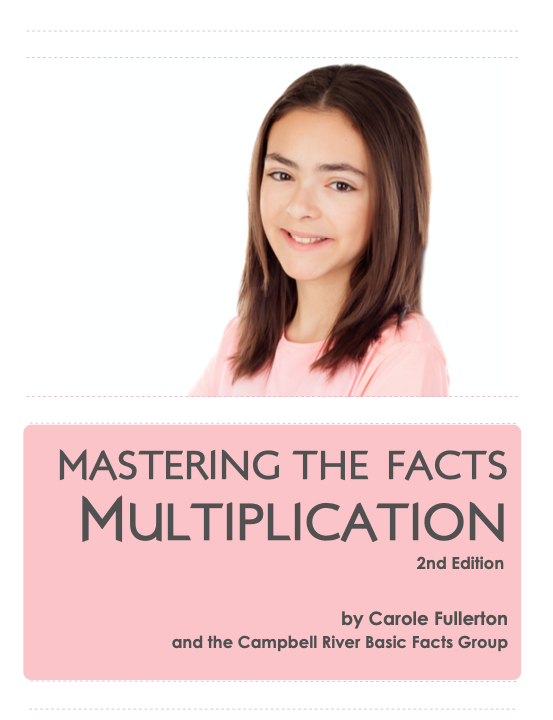 There is no doubt that students need to master their multiplication facts — and how we get them there matters.
There is no doubt that students need to master their multiplication facts — and how we get them there matters.
In this revamped second edition of Mastering the Facts Multiplication, you’ll find a scope and sequence for teaching the facts, strategies for addressing each of the fact families, expanded whole group lessons, new games for practice and literature connections to ensure your students learn — and retain — the facts.
I would like to acknowledge and recognize those teachers from SD72 Campbell River who helped to develop these lessons for the original volume in 2012. Our collaboration continues to inspire!
Go to my online store and check it out.
NEW Resource! Proportional Reasoning in Grades 4-8
 For those who have been patiently waiting (and lovingly nagging!) I am happy to announce the publication of my newest math teaching resource: Proportional Reasoning in Intermediate for Grades 4-8, available now through my online store.
For those who have been patiently waiting (and lovingly nagging!) I am happy to announce the publication of my newest math teaching resource: Proportional Reasoning in Intermediate for Grades 4-8, available now through my online store.
This resource for teachers of Grades 4 to 8 presents more than 250 pages of open-ended lessons, meaningful practice, games, literature connections and a wealth of problem-solving contexts for supporting students to make sense of fractions, decimals, percentages, ratios and proportions. Designed for today’s diverse classrooms, this resource offers a range of tasks to promote proportional thinking through intentional development of mathematical language and the use of key manipulatives. Colour tiles, Cuisenaire rods and tangrams are used to model and make connections within and between concepts.
In the first section of the resource, students will explore three models – set, area and linear – for representing and describing, comparing and ordering fractions. Students will learn to convert between fractions, decimals and percent and to apply these skills to problem situations, including measurement, tax, discounts and data management. Next, students learn to add and subtract fractions, to solve proportions using a range of strategies (involving both mental math and the appropriate use of technology) and then finally to multiply and divide fractions.
Assessment tools are threaded throughout the resource to allow teachers to keep track of student progress and to make instructional decisions.
Proportional reasoning IS the math we do every day. This resource provides an access point for all.
Enjoy!
Maintenant disponible en français!
Finally … French translations of my latest books are now available!
Je viens de traduire mes deux ressources de bonnes questions — “A Year of Good Questions for Grades 2-4” et “A Year of Good Questions for grades 5-8” — afin que mes collègues d’immersion aient des ressources françaises avec lesquelles travailler. Merci pour vôtre patience!
In these new French translations of the English originals, you’ll find more than 200 open-ended and engaging problems for french immersion students from primary through middle school. All are posed in French and explore important mathematical concepts across the grades.
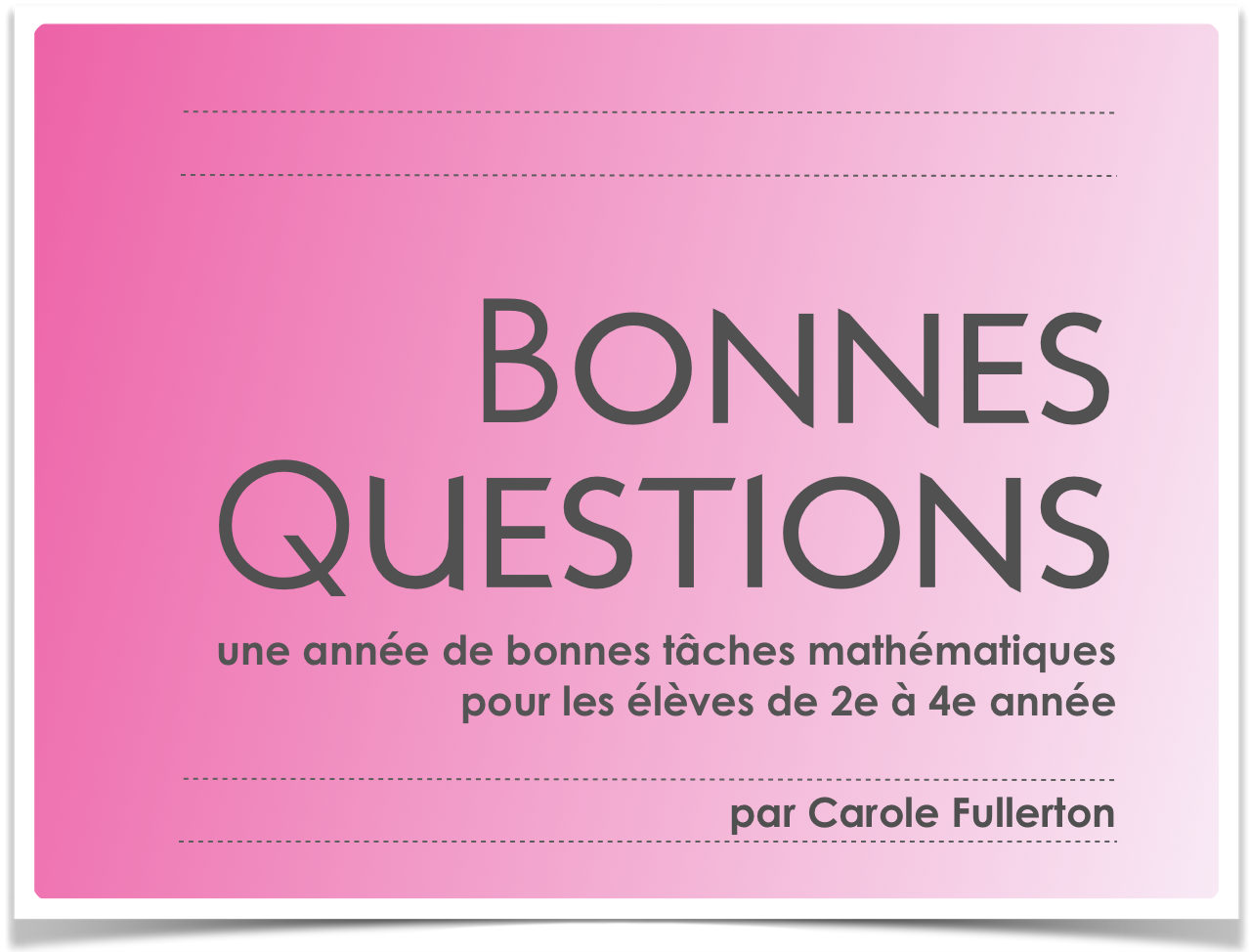 The first book: Bonnes Questions: Une année de bonnes tâches mathématiques pour les élèves de 2e à 4e is suitable for late primary students (grades 2-4) and features operational tasks, measurement tasks and pattern tasks of increasing complexity, posed in French.
The first book: Bonnes Questions: Une année de bonnes tâches mathématiques pour les élèves de 2e à 4e is suitable for late primary students (grades 2-4) and features operational tasks, measurement tasks and pattern tasks of increasing complexity, posed in French.
 The second volume: Bonnes Questions: Une année de bonnes tâches mathématiques pour les élèves de 5e à 8e is perfect for middle school immersion students (grades 5-8), with a focus on proportional reasoning, algebraic thinking as well as operations on integers, fractions and decimals to name a few.
The second volume: Bonnes Questions: Une année de bonnes tâches mathématiques pour les élèves de 5e à 8e is perfect for middle school immersion students (grades 5-8), with a focus on proportional reasoning, algebraic thinking as well as operations on integers, fractions and decimals to name a few.
Engaging problems and choice make these volumes the perfect conversation starter for our immersion classrooms, promoting oral language development and mathematical thinking …en même temps!
All are available from my online store.
Carole
New For Primary! Good Questions: A Year of Open-Ended Problems for Grades 2-4
For those of you who have been waiting ever so  patiently, I wanted to let you know that I have completed a primary companion to the Year of Good Questions for Grades 5-8 resource released this summer.
patiently, I wanted to let you know that I have completed a primary companion to the Year of Good Questions for Grades 5-8 resource released this summer.
A Year of Good Questions for Grades 2-4 is the late primary version of this stand up calendar of problems — one for every day of the school year!
Like its intermediate counterpart, this compact but potent book comes with an easel so you can set it up on your desk and flip from one rich problem to the next, posing open-ended questions of your primary students.

Good Questions: A Year of Open-Ended Math Problems for Grades 2-4 is a problem-a-day resource that includes rich tasks ideal for grades 2, 3 and 4. Organized by topic and structured in problem sets of 5, this simple to use teacher resource includes 200 mathematically important questions to engage your students in deep thinking. For only $25, it’s a reasonably priced way to stimulate and promote mathematical conversation!
Operations, measurement, proportional thinking and patterns are featured in this calendar of problems. Each one engages students in thinking flexibly, critically and creatively to solve tasks of varying complexity.
Visit my online store at mindfull.ecwid.com to order.
Let the fun begin!
Carole
Good Questions: A Year of Open-Ended Problems for Grades 5-8
I am pleased to say that — beyond spending every day on the water this summer — I DID manage to create a new teacher resource for my intermediate colleagues.
This time, it’s a stand up calendar of problems — one for every day of the school year!
This compact but potent book comes with an easel so you can set it up on your desk and flip from one rich problem to the next, posing open-ended questions of your intermediate students.

Good Questions: A Year of Open-Ended Tasks is a problem-a-day resource that includes
rich tasks ideal for grades 5, 6, 7 and 8. Organized by topic and structured in problem sets of 5 or more, this simple to use teacher resource includes 210 mathematically important questions to engage your students in deep thinking. For only $25, it’s a perfect back-to-school gift for yourself!
Proportional reasoning, measurement, operations and algebra are featured in this calendar of problems. Each one engages students in thinking flexibly, critically and creatively in the face of important and challenging mathematics.
Visit my online store at mindfull.ecwid.com to order.
Let the problem-solving begin!
Carole
New Resource! Place Value For Intermediate (Grades 3 to 5)

Phew! This one has been a long time in coming… :o)
My sincere appreciation to all of you who have waited for the publication of this book. As you know, I’ve had a pretty remarkable year. I hope you’ll forgive me, knowing that only good distractions delayed its completion!
But I am pleased as punch to announce the release of Place Value For Intermediate: Building Number Sense for Grades 3-5, available now from my online store for $50.
This resource for teachers of Grades 3 through 5 features lessons designed to support deep learning of number. A wide range of both open-ended and directed tasks focus on representing, describing, comparing and ordering numbers to 100 000, as well as explorations of decimal numbers to thousandths.
Measurement experiences make up a big part of this series of tasks. The metric system and all of its place value connections is featured in explorations of linear measurement (mm, cm, m, km), perimeter (cm, mm), area (square cm and square m), mass (g, kg) and capacity (mL, L).
Addition and subtraction of large numbers and decimals are also addressed in this volume. Lessons at the grades 4 and 5 level focus on multiplication of 1 by 2- and 3-digit factors as well as 2 by 2-digit factors using the distributive property (an area model).
Assessment tasks tap into students’ understandings of these numbers and their application in the real world. Being able to see and relate to big numbers and to very small ones, to understand their relative size and to capably use these numbers to estimate is the essence of number sense.
Set up in a developmental continuum intended to facilitate the teaching of combined grades, this 352 page volume is certain to contain material to meet the needs of all learners and to inspire fun and engagement with critically important place value concepts.
When you buy the book online, you also get access to almost 40 pages of digital files and resources, which will be emailed to you as a downloadable pdf!
Thanks for your continued support and inspiration…
Enjoy!
Carole
One Million Hits
Wow.
One million hits on my blog…? Amazing. 🙂
I am truly grateful for the support, encouragement and professional curiosity of those of who who have visited my blog since its inception so many years ago… I am indebted to those of you who have told friends and colleagues about the blog and grateful for my “regulars” — those of you who return to it from time to time, looking for resources. Your enthusiasm buoys me up!
It is indeed a great privilege to be a part of this international community of teachers of mathematics. Thank you.
Carole
Place Value in Primary: Developing Number Sense
 Wow. I have had the most extraordinary summer. Truly extraordinary. And somehow between engaging in a series of remarkable, life-affirming adventures I have managed to write another teacher resource book… 😊
Wow. I have had the most extraordinary summer. Truly extraordinary. And somehow between engaging in a series of remarkable, life-affirming adventures I have managed to write another teacher resource book… 😊
It’s all about Place Value (as I’m sure you’ve figured out!) and is intended for teachers of kindergarten through grade 2, with special accommodations for those who teach in combined grades settings. There are 230 pages of developmentally framed lessons designed to address the diversity in our primary classrooms. Each one supports students to represent and describe quantity, to compare and order sets, to use referents to estimate and to skip count. Lessons devoted to measurement — an ideal practical application of place value in the world — are also featured. Whole class lessons, centres tasks and games for practice allow students to connect these important concepts in a seamless way, and can be used both as a unit or spread throughout the year to build and consolidate understanding.
Place Value in Primary: Developing Number Sense is available from my online store for $40 plus shipping. I hope you enjoy it!
Carole
(PS… A companion volume for Grades 2 to 4 is in the works – expect it later this fall!)



